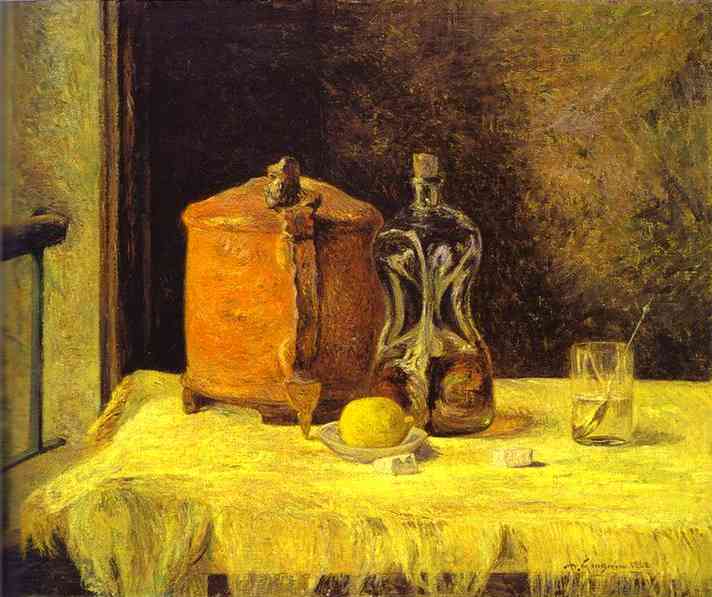Описание
Paul Gauguin's painting "At the Window" (1882) is a work that lies at a fascinating intersection between Symbolism and Impressionism, styles that the artist helped redefine in his time. Gauguin, who would later be known for his bold chromatic explorations and his use of color as a means of conveying emotion, offers in this work a remarkably introspective and contemplative depiction of everyday life.
In the composition, a young female figure occupies the centre of the scene, seated in front of a window which, in turn, becomes a frame that provides a view of the outside world. The figure is rendered in a stylised manner, with particular attention to form and silhouette, aspects that align with the formalist approach that would characterise Gauguin’s later work. Her relaxed posture and contemplative gaze towards the landscape suggest an intimate connection with her surroundings, whilst also evoking a sense of isolation. This duality between connection and solitude is made palpable, a recurring theme in Gauguin’s work that invites the viewer to reflect on the nature of perception.
The use of color in “At the Window” is significant. Gauguin employs a rich, nuanced palette that highlights the luminosity of the scene. Green and blue hues predominate, evoking a sense of calm and serenity, while contrasting touches of yellow and brown in the figure’s clothing add an additional dimension to the work. This choice of color not only supports the atmosphere of the painting, but also accounts for Gauguin’s ability to use color symbolically, depicting emotional and psychological states through his tonal selection.
The background of the painting reveals a vibrant landscape, where the green of the vegetation meets the blue of the sky, creating a harmonious connection between the interior and the exterior. This relationship is not merely decorative; rather, it serves to emphasize the isolation of the figure in the foreground. The window frame acts as a filter, suggesting that although there is a larger, possibly vibrant world just out of reach, the woman remains in a state of introspection.
At the Window can also be seen in the context of Gauguin's evolving art and his eventual turn toward Symbolism. Although still firmly rooted in Impressionism, the formal structures and arrangement of elements seen in this work anticipate his later simplified style and focus on the symbolic, which would reach its culmination in his later years in Tahiti.
The female figure, often seen as a representation of the artist’s muse or alter ego, refers to the exploration of identity and subjectivity that would characterise his later work. This focus on the female figure as a bearer of experience and emotion is a theme that resonates throughout his career and links to the social criticism often deployed in his later works.
In short, At the Window is a work that, through its intimate composition and poetic use of color, allows viewers to penetrate the psyche of the subject and, simultaneously, that of Gauguin. This painting is not only a reflection of the outside world, but also a meditation on the meaning of observation and human experience. By exploring the tension between connection and separation, Gauguin invites the viewer to reflect on their own perception and place in the world.
KUADROS ©, a famous painting on your wall.
Hand-made oil painting reproductions, with the quality of professional artists and the distinctive seal of KUADROS ©.
Painting reproduction service with satisfaction guarantee. If you are not completely satisfied with the replica of your painting, we will refund 100% of your money.

